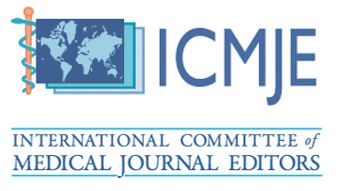A Novel Approach for the Assessment of True Maxillomandibular Sagittal Relationship in Maharashtrian Population Using a Zeta Angle: Cross-Sectional Study
Sunil Kalyankar1*, Sandeep Jethe2, Varsha Merani3, Shailesh Dongre4, Arun Mhaske4, Suyog Shendge4, Abdulrehman Foujdar5, Aakanksha Kedar1
1Final year PG- Department of Orthodontics and Dentofacial Orthopaedics, D Y Patil Dental School, MUHS, Pune, Maharashtra, India.
2Head of Department of Orthodontics and Dentofacial Orthopaedics, D Y Patil Dental School, MUHS, Pune, Maharashtra, India.
3Associate professor Department of Orthodontics and Dentofacial Orthopaedics, D Y Patil Dental School, MUHS, Pune, Maharashtra, India.
4Reader at Department of Orthodontics and Dentofacial Orthopaedics, D Y Patil Dental School, MUHS, Pune, Maharashtra, India.
5Lecturer at Department of Orthodontics and Dentofacial Orthopaedics, D Y Patil Dental School, MUHS, Pune, Maharashtra, India.
*Corresponding Author: Sunil Kalyankar, Final year PG- Department of Orthodontics and Dentofacial Orthopaedics, D Y Patil Dental School, MUHS, Pune, Maharashtra, India.
https://doi.org/10.58624/SVOADE.2025.06.017
Received: February 01, 2025
Published: June 12, 2025
Citation: Kalyankar S, Jethe S, Merani V, Dongre S, Mhaske A, Shendge S, Foujdar A, Kedar A. A Novel Approach for the Assessment of True Maxillomandibular Sagittal Relationship in Maharashtrian Population Using a Zeta Angle: Cross-Sectional Study. SVOA Dentistry 2025, 6:3, 97-107. doi: 10.58624/SVOADE.2025.06.017
Abstract
Introduction: Accurate diagnosis and treatment planning for sagittal skeletal dysplasia require a thorough assessment. A novel cephalometric parameter, the Zeta angle, is proposed to evaluate maxillomandibular relationships in the sagittal plane.
Materials and Methods: This observational study used 294 pre-treatment lateral cephalograms of 15- to 25-year-olds, categorized into skeletal Classes I, II, and III based on Wits appraisal, ANB angle, and Beta angle. "Patients were recruited from the Maharashtrian population between February 2020 and November 2024. The Zeta angle, constructed using points Pt, M, and Pm, was measured to assess maxillomandibular discrepancy in the sagittal plane. Statistical tests were used to calculate the mean Zeta angle values. "ANOVA, followed by Bonferroni post-hoc tests, was used to assess skeletal differences between groups. ROC curve analysis was used to evaluate the sensitivity and specificity of the Zeta angle.
Results: The results indicated that a mean of Zeta angle for Class I skeletal jaw pattern is 62.85, mean Zeta angle for Class II skeletal jaw pattern is 55.72, mean Zeta angle for Class III skeletal jaw pattern is 67.86, a Zeta angle less than 57.5° indicated a Class II skeletal jaw pattern, and a Zeta angle greater than 64.5° indicated a Class III skeletal jaw pattern. According to ROC curves showed that a Zeta angle less than 57.5° had 57% sensitivity and 52% specificity in distinguishing Class II from the Class I subset. A Zeta angle greater than 64.5° has a sensitivity of 89% and specificity of 82% in distinguishing Class III from the Class I subset.
Conclusion: The Zeta angle offers a reliable diagnostic tool for assessing sagittal jaw relationships, as it is based on stable anatomical landmarks. This ensures that its measurement remains unaffected by jaw rotations or orthodontic treatments, enhancing its utility in clinical evaluations.
Keywords: True Maxillomandibular Sagittal Relationship; Zeta angle; Maharashtrian Population











